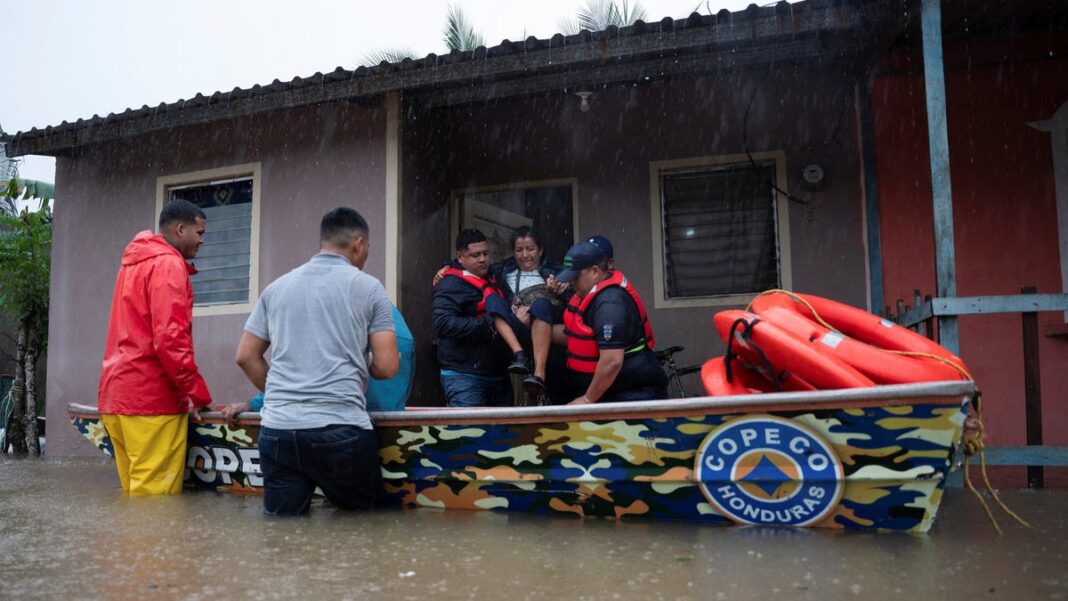Tropical Storm Sara may weaken but could still cause trouble in the Southeast
Tropical Storm Sara made its way through Central America on Sunday, potentially heading towards Florida and the Southeastern U.S. as the 2024 hurricane season thankfully approaches its end.
According to AccuWeather, Sara might travel across the Gulf of Mexico, regain some strength, and pose risks of flooding rain, storm surges, and powerful winds in Florida. Any impacts from this storm could hinder efforts to recover from Hurricanes Helene and Milton.
“Some moisture from Sara will be pulled ahead of a cold front and could increase rainfall across parts of the Southeast, including Florida, into the middle of next week,” Weather Channel forecasters explained.
As of early Sunday, Sara was located about 30 miles south-southwest of Belize and was expected to make landfall shortly, as noted by the National Hurricane Center. The storm had been following the coast of Honduras, where it caused heavy rainfall despite lower wind speeds.
In Honduras, rainfall amounts were predicted to peak at 15 to 25 inches, with isolated regions possibly receiving up to 40 inches, according to hurricane center specialist Philippe Papin in an early Sunday update.
“This level of rainfall can lead to life-threatening flash floods and mudslides across Honduras,” Papin cautioned.
Belize, El Salvador, Guatemala, Nicaragua, and parts of Mexico’s Quintana Roo could see 5 to 10 inches of rain, with some areas potentially experiencing localized totals near 15 inches, Papin remarked.
What does this mean for the U.S.?
The trajectory of the storm remained uncertain on Sunday. It was projected that Sara would weaken after making landfall and could downgrade from tropical storm status before re-entering the Gulf of Mexico. However, its remnants could regain strength and pose risks to Florida’s weather with heavy rain, storm surges, and damaging winds, according to AccuWeather meteorologists.
Papin indicated that moisture from Sara’s remnants might cause rainfall along the U.S. Gulf Coast from Louisiana to the Florida Panhandle on Tuesday. However, the Weather Prediction Center only predicted a “slight risk” of significant rainfall, Papin noted.
Initially classified as a tropical rainstorm a week prior, the system was upgraded to Tropical Depression 19 then strengthened into Tropical Storm Sara by Thursday, marking the 18th named storm of the 2024 Atlantic hurricane season, which officially ends on November 30.
A challenging hurricane season in 2024
Sara’s impacts could further extend the toll from a challenging year, which has already seen 11 hurricanes, of which five were labeled “major” storms reaching Category 3 status or higher. The most devastating storms, Helene and Milton, may result in damage costs nearing $100 billion.
Initially, forecasters warned that Sara might reach hurricane strength, a rare occurrence. Historically, only three hurricanes have impacted the U.S. or made landfall in November: one each in 1861 and 1935, and Hurricane Kate in 1985, according to data from the National Oceanic and Atmospheric Administration.

